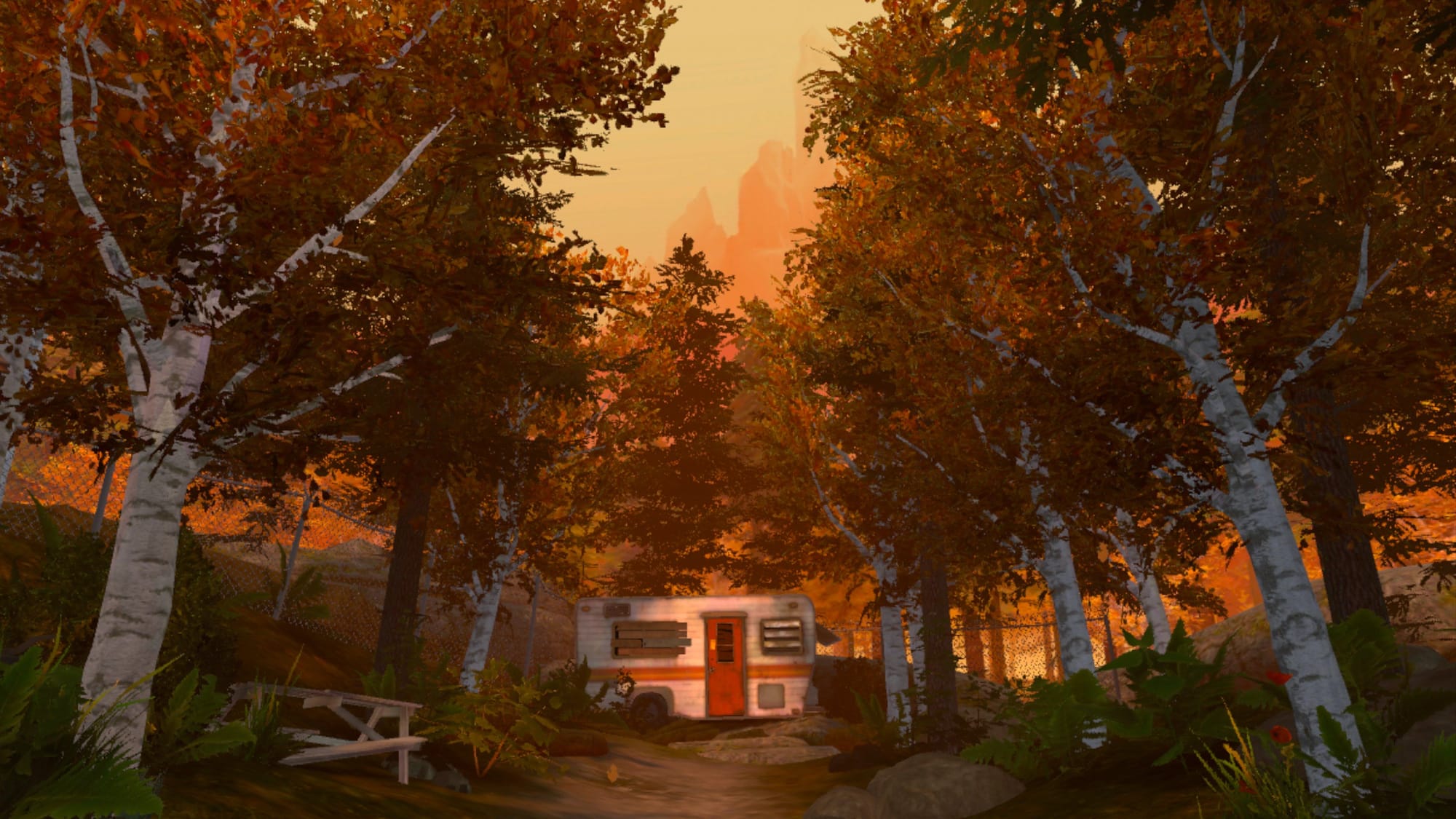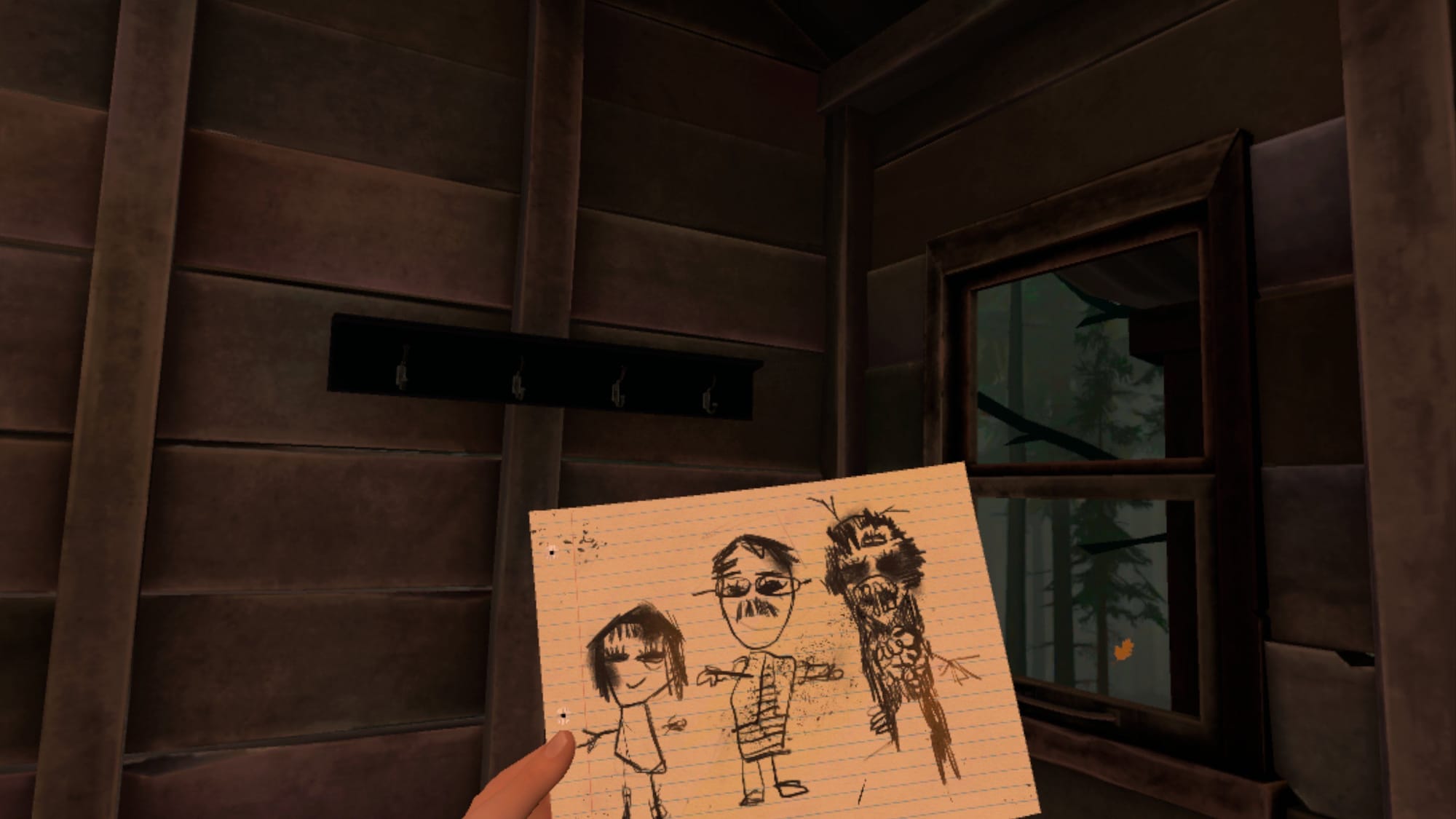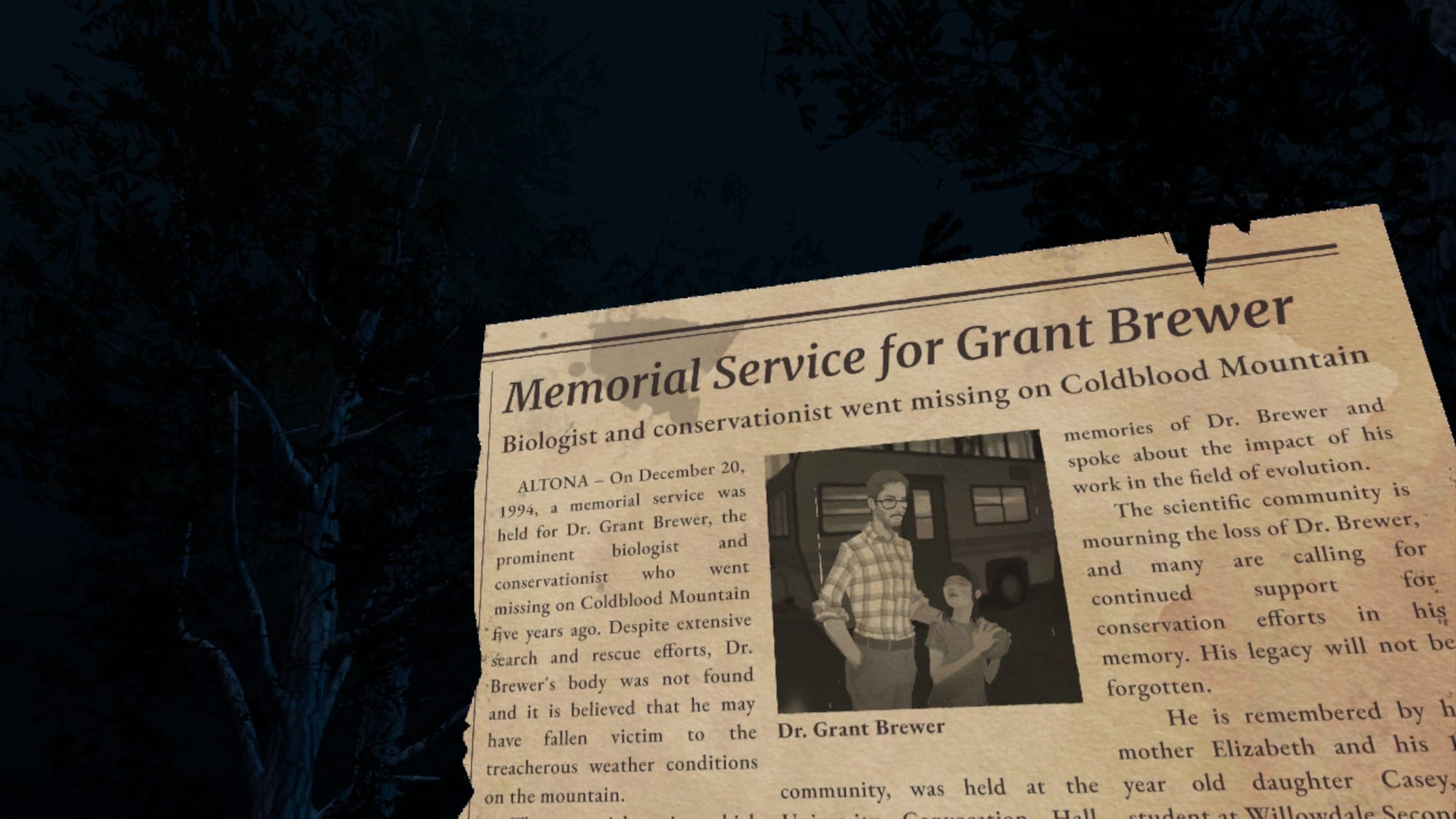In Broken Spectre, you play as Casey Brewer, a headstrong woman who lost her father in mysterious circumstances when she was just nine years old. Now, decades later and with a child of her own, she returns to the mountain that supposedly claimed the life of the renowned biologist after receiving a cryptic call from him.
It’s a cosmic horror set-up that shares similar notes to games such as Night in the Woods, reminding us of how the mundane can hide truly unnerving and ethereal concerns. Marketed as being from one of the creators of The Blair Witch Project, it’s certainly got good genre pedigree. As someone initially unfamiliar with Broken Spectre’s original release, which launched in 2023 for last-gen headsets, I wasn’t sure what to expect.
Despite being confronted with a screen suggesting that the game is best played with hand tracking, I defaulted to my usual approach of being seated with controllers due to the low light in my home environment. This was a mistake. With regular, immersion-breaking pop-ups from controller inactivity telling me to play hands-free and the absence of smooth turning, I had a decidedly better time playing this when I stopped fighting the game’s design and did what the developer recommended.

After an otherworldly introduction, moving through a dreamlike wood at night as story exposition is provided through an internal monologue and giant, superimposed newspaper clippings, you quickly find yourself on a crisp mountain trail during fall. From there, you move through the game using a point-to-point system – no free locomotion here.
Despite the remaster providing additional visual polish and better visual fidelity overall, the continued focus on snap turning and node-based movement is off-putting to someone who typically avoids these accessibility options, especially when moving through open environments. I would have personally hoped to see improvements in these areas in a remastered version.
Where Broken Spectre comes alive is in its more intimate scenes. Moving through an RV or log cabin, opening drawers to find keys to unlock a toolbox, or sifting through pieces of environmental storytelling that allude to the broader, shapeless threat beyond the confines of the room is genuinely enjoyable (even when photographs or evidence are placed just out of reach of the closest node). There’s some additional color to these environments, with a handful of appropriate jump scares thrown in for good measure.

Broken Spectre feels like a visual novel or point-and-click adventure adapted for VR, but I’m not sure if it gains much from the shift in medium in the time I’ve had with it so far. It falls within a strange participation middle ground where it’s not as passive as a flat-screen visual novel, but doesn’t allow you the freedom or level of interactivity I’ve come to expect from VR games in 2025. Despite the primary control method being hand tracking, it feels a little dated in its overall approach.
Just like its genre and flatscreen inspirations, the star of the show is the story. I’m intrigued enough to want to keep playing to learn more, despite some abrasion with the game’s design and how it continues to feed you the overall narrative. As a first impression to new players, the large newspaper clippings aren’t particularly fun to stand and read through when they could have been better served as something to find and pick up in the environment.
Mobile phones and the field guide hang in front of your face rather than being something you retrieve from your backpack and hold with any tactility. I much prefer the level of interaction and reward when Casey’s internal monologue adds color to an old photograph or children’s drawing that I’d found. Although being told rather than shown a story is commonplace for this genre outside of VR, I feel there’s an expectation around the level of active participation when a title is brought into VR. Broken Spectre just doesn’t quite reach me.

You can expect clear and welcome visual improvements if you’ve played it before, though Broken Spectre: Director’s Cut doesn’t include new playable content. With the story being the strongest aspect of this title, it would have been a very welcome addition. I’m intrigued to learn more about Casey and what mysteries the mountain holds beyond the early mention of wildlife mutations and the otherworldly overtone, that’s for sure.
Broken Spectre: Director’s Cut is out now on Quest and Steam, and anyone who owns the game already can upgrade for free. You can see graphical comparison screenshots between the Director’s Cut and the original version below.
